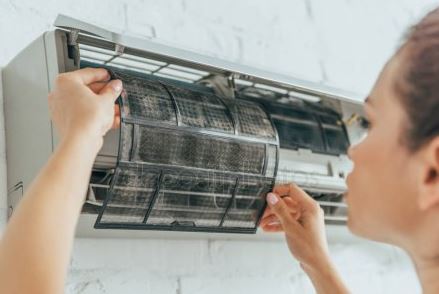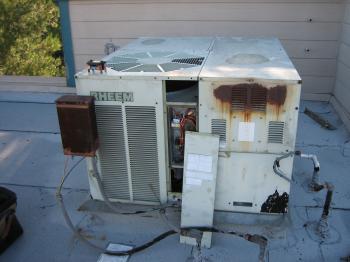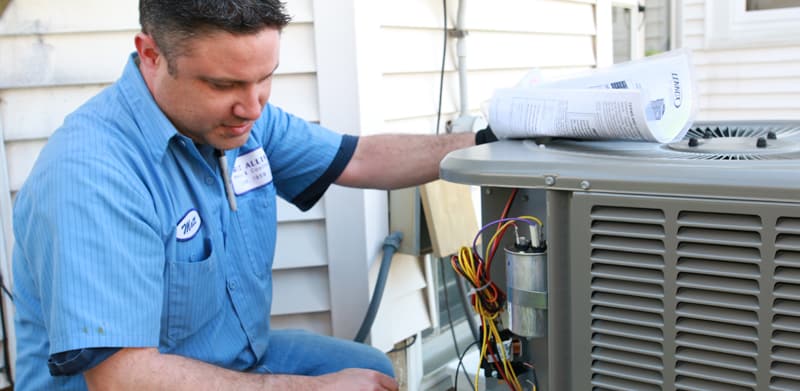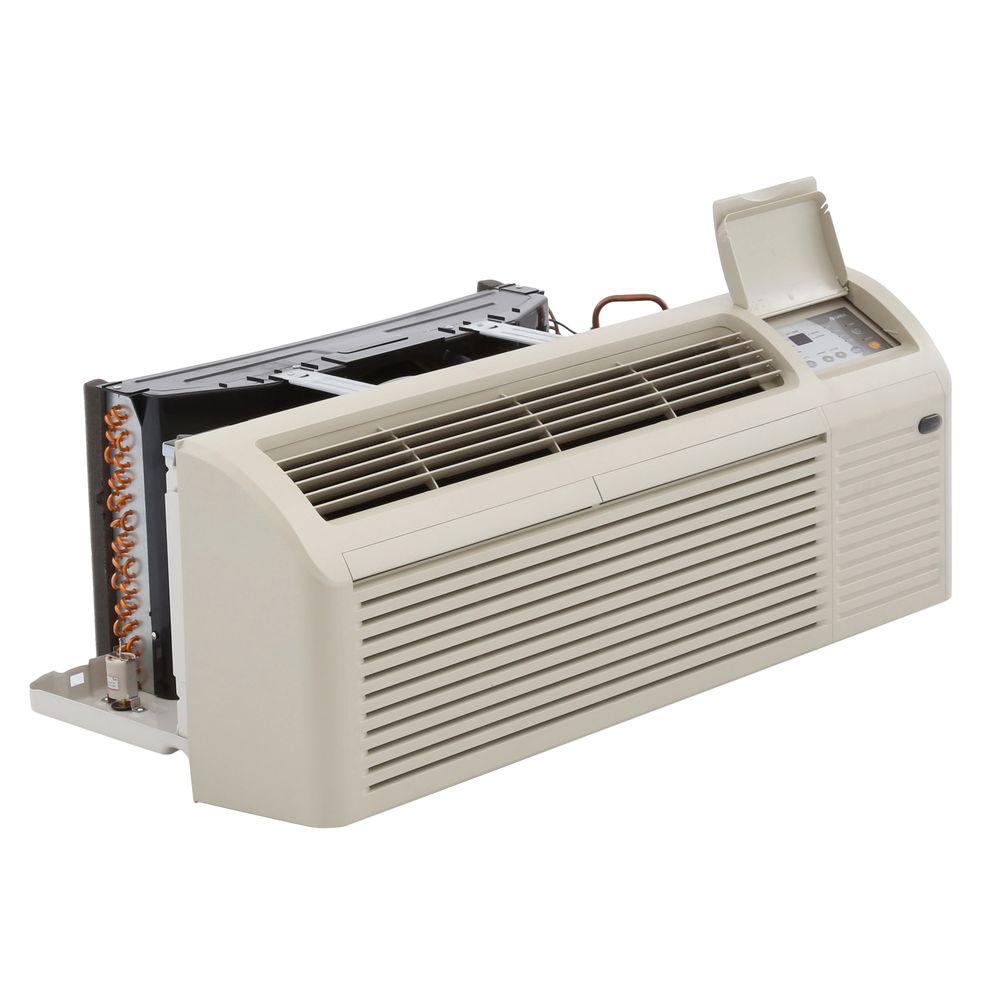Repair or Replace An Air Conditioner?
The Right Way to Decide
 Why repair or replace an air conditioner this fall?
Why repair or replace an air conditioner this fall?
If you’ve got an aging air conditioner, you may be breathing a sigh of relief when Labor Day rolls around. You made it through another summer with the old unit! But don’t talk too soon. You could still experience a breakdown during a brutal week of Indian summer. Then you’ll need to decide whether to repair or replace the air conditioner.
The truth is, fall is a great time to take control of your air conditioning issues and repair or replace your air conditioner. If you do decide on AC replacement, you’ll have more time to shop around since there’s less pressure to make a quick decision. You’ll also have the opportunity to get a great price on units in stock. (That’s because your vendor wants to make room for winter equipment and next year’s new models). If you decide on AC repair, the best HVAC service experts are less booked up than in the summer.
Repair or replace the air conditioner: why it’s a tricky decision
So, how do you go about making that decision to repair or replace the air conditioner? How can you tell when a piece of equipment has outlived its useful life? Can you get your older unit to last another couple of years by fixing it? Or will you have to continue putting money into it? Newer, more energy efficient units can lower your electric bill, but what about the upfront cost?
The unfortunate truth is, there is no cut and dried answer. But here’s how you can make the best decision to repair or replace your air conditioner. Keep reading to learn what factors to consider about your equipment and its history, and whom to trust for advice.
How to get advice you can trust about air conditioning repair or replacement
It’s no secret that some service providers will try to sell you a new system when your old one just needs a simple repair. (You’ve probably seen the YouTube videos and TV news stories exposing fraudulent service providers!). Other providers that make their money on repeat service calls may encourage you to keep fixing a unit that’s become a money pit. So whose advice can you trust to help you decide whether to repair or replace the air conditioner? Here are two tips for weeding out vendors who might steer you wrong.

DON’T DECIDE ON THE SPOT. Be wary of any service provider that insists you need to rush into a decision to purchase new equipment. Be even more wary if they have not offered an adequate explanation about what’s wrong – or one you can’t understand. You should never decide to purchase expensive equipment on the spot. Under pressure, it’s easy to make the wrong choice and spend more money than you need to. It’s your right to take the time you need to decide whether to repair or replace the air conditioner.
ASK AN UNBIASED SERVICE PROVIDER. Look for an HVAC company that does both new equipment installations and repair service. That way, you can be sure they have no vested interest in advising you to repair or replace the air conditioner. The advice you get will be based on what makes the most sense for your situation, not what’s in the best interest of the vendor.
5 facts that help you make a good decision
Even with the best advice, you need to understand the facts of the situation. Then you can make the most informed decision to repair or replace the air conditioner. Here’s what to consider:
Some problems, even though they may seem serious, are actually easy and relatively inexpensive to fix. Electrical issues often fall into this category. And if your system is making so much noise that you’re afraid it’s about to die, the news may not be as bad as you think. You may just need some maintenance or redesign work.
Related article: Air Conditioning Problems: Repair or Redesign a Noisy AC Unit?.
However, if the compressor has failed, especially on an older unit, it’s often time to replace. The compressor is the heart of the system, and the investment to fix it may not be worth the cost. Also, many times compressor failure is caused by a secondary issue that won’t be discovered until after you replace the compressor.
Other issues, such as refrigerant leaks, can go either way. One small leak might be an easy fix. But finding the source of multiple leaks on an older system with a lot of corrosion on the coils can be time consuming and expensive. And ineffective, since more leaks will continue to develop. In this case, replacement is likely to be the wiser option.

SYSTEM AGE
Most light commercial air conditioning units are designed to last about 15 to 20 years under optimal conditions. However, if you have a rooftop or other outdoor unit in a large city like New York, you don’t have optimal conditions. If your outdoor air conditioner has been exposed to harsh pollution for more than 10 years, it may not be worth making a large investment in repairs at this point.
CONDITION AND MAINTENANCE HISTORY
How the equipment has been cared for has a major impact on the lifespan of an air conditioning unit. Has it been regularly serviced and cleaned according to the manufacturer’s recommendations? If so, then most parts may be in good shape even if the system is more than 10 years old. Your unit is less likely to keep failing.
RECENT PERFORMANCE

Has this unit been running reliably until now? If the parts are in good shape, there’s a good chance it’s worth fixing. On the other hand, if it’s had a history of breakdowns and poor performance, you’re likely to keep experiencing problems.
 Here’s another tip. If the occupancy and usage of your space have changed, your system’s capacity and ventilation design may no longer be adequate. If you fix your old unit you can still be left with temperature variances and even air quality problems. If you are experiencing hot and cold spots, humidity issues, odors, and even reports of “sick building” symptoms from occupants, HVAC replacement is probably the way to go. Your contractor can then evaluate the usage, capacity and location of your unit and ventilation equipment, increasing the comfort levels in your space.
Here’s another tip. If the occupancy and usage of your space have changed, your system’s capacity and ventilation design may no longer be adequate. If you fix your old unit you can still be left with temperature variances and even air quality problems. If you are experiencing hot and cold spots, humidity issues, odors, and even reports of “sick building” symptoms from occupants, HVAC replacement is probably the way to go. Your contractor can then evaluate the usage, capacity and location of your unit and ventilation equipment, increasing the comfort levels in your space.
HOW MUCH CAN YOU SAVE ON ENERGY BILLS WITH A NEW UNIT?

HVAC sales literature promises that an efficient new air conditioner will save you money by reducing your electric bill. You might wonder if the savings is worth the cost of a new air conditioner replacement. The truth is, the cash you save each month can be substantial and can add up very quickly. Especially if you have an air conditioner that’s more than 10 years old. To figure out how much you could save with a new, energy efficient system,

















